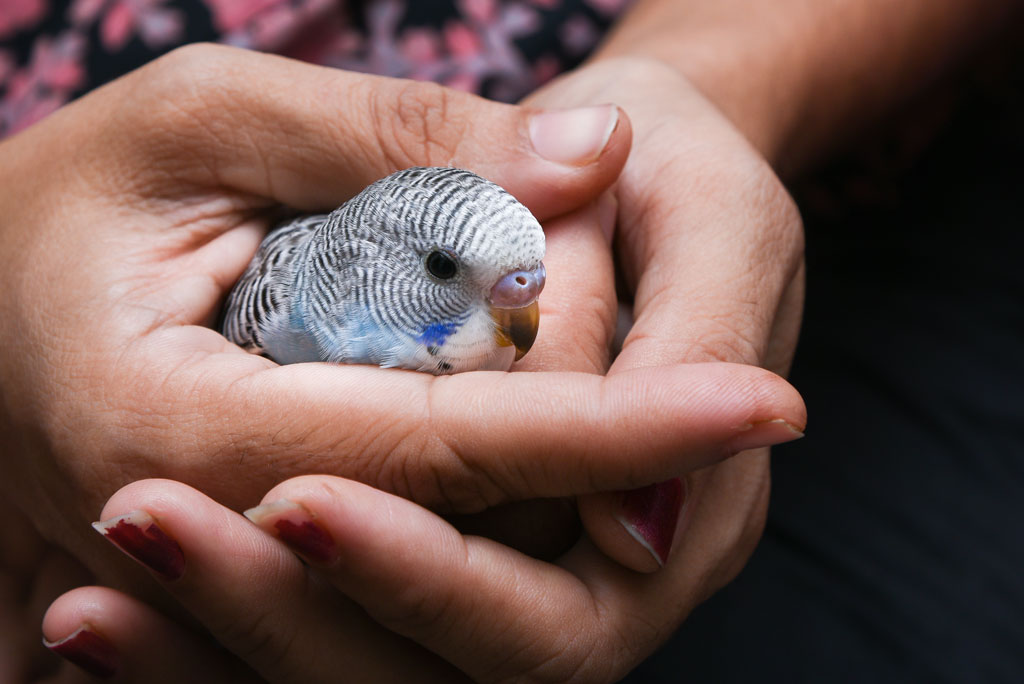You are walking home one day and you spot an injured bird by the side of the road. What do you do? Especially during spring, it is very common for people to find fledglings and take them into vet clinics. This may not be the right thing to do. With the following tips, you can figure out your next step to help your new feathered friend.
Know your hatchling from your nestling
The first thing to do is identify whether you have found a hatchling, a nestling or a fledgling.
If it is a hatchling, the eyes would be closed. You would see just a very small, bald bird. Firstly, look around to see if you can easily spot a nest, or the bird’s parents. If you have found a hatchling and you can’t see where it has come from, you would take it immediately to a vet.
If it is a nestling, the eyes would be open and a small amount of plumage beginning to develop. Birds are usually about two to three weeks old when they are at nestling stage. If you are able to see the parents or the nest the best thing to do is to see if there is any way for you to physically get the bird back in the nest.
You can call WIRES (Wildlife Information, Rescue and Education Service) and see if they can assist. The best thing for the young bird is to definitely be with their parents. They are still at quite an important age and need to be fed constantly throughout the day.
How to identify a fledgling
The most commonly found bird is a fledgling. Quite often people will see these fledgling birds on the ground and think they have found a baby bird that should be in a nest. But really the ground is where they should be.
When they are a fledgling, they have all of their feathers but their flight feathers haven’t grown through yet. They look obviously small and young and are unable to fly. But they are at the fundamental age of learning how to climb and how to start gaining their muscles in their wings.
It is very normal for fledglings to be out of the nest and on the ground at this age, even though they look really out of place by being on the ground. Usually they are very able climbers and can get themselves quite high up into a tree if they are given a little bit of assistance.
The best way to help an injured bird
If you find a fledgling, first scope your area. Have a look at the bird, make sure the bird is not injured, and then have a look around in the trees to see if there are any parents around. If there are parents around and you can isolate which tree the bird has come from, the best thing to do is to try and get it as high up into the tree as possible.
Usually once you have done this, they will start climbing and try and get themselves towards where they need to be. If that is not an option, another thing you can do is use a picnic basket or even just an ice cream bucket with some holes poked down into the bottom of it—pop a little bit of leaf litter inside and you can either wedge into a branch or hammer into the tree.
Parents of these birds are very unlikely to abandon them even if they are not in the same tree. They will still come and feed them. These birds will do much better in their own parents’ care than they will in captivity.
Ask the experts
Year after year, well-meaning members of the public bring in birds they have found. They have looked after the birds, but then become concerned they are not feeding them the right diet. The birds end up having deformities and ongoing problems and they could never be released.
Trying to reunite the bird back with the parents is definitely the most important thing. If this is not an option however, if it has an injury or it is just not possible to safely reunite the bird and parents for whatever reason, it is really important to take it to your local vet clinic and have them call either Sydney Wildlife or WIRES.
Quite often these carers are experienced in rehabilitating these birds. They will have a flock that they will rehabilitate together and then release all at the same time. It is important this is done by somebody who is experienced with these birds and who can rehabilitate them for release properly.
